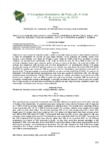Please use this identifier to cite or link to this item:
http://www.alice.cnptia.embrapa.br/alice/handle/doc/532552| Title: | Restrição no consumo lácteo de crias da raça Anglo-Nubiana. |
| Authors: | BOMFIM, M. A. D.  CAVALCANTE, A. C. R.   LOBO, R. N. B.   SANTOS, S.   OLIVEIRA, A. Z. R. de   PEREIRA, L. P. da S.   GOMES, G. F.   |
| Affiliation: | MARCO AURELIO DELMONDES BOMFIM, CNPC; RAIMUNDO NONATO BRAGA LOBO, CNPC. |
| Date Issued: | 2006 |
| Citation: | In: CONGRESSO NORDESTINO DE PRODUÇÃO ANIMAL, 4. SIMPÓSIO NORDESTINO DE ALIMENTAÇÃO DE RUMINANTES, 10. SIMPÓSIO DE PRODUÇÃO ANIMAL DO VALE DO SÃO FRANCISCO, 1., 2006, Petrolina. Anais... Petrolina: Sociedade Nordestina de Produção Animal Embrapa Semi-Arido, 2006. 4 f. 1 CD-ROM. |
| Description: | Objetivou-se com o presente trabalho avaliar o efeito da restrição alimentar sobre o desempenho, consumo e custo de alimentação de cabritos da raça Anglo-nubiana. Foram utilizados 18 cabritos, sendo nove machos e nove fêmeas, com idade de 15 dias e peso médio de 4,789 ± 0,510 kg, mantidos em baias coletivas. Os animais foram submetidos a três níveis de oferta de leite: 10, 15 ou 20% do peso vivo. As variáveis coletadas foram: peso corporal, ganho em peso e consumo de leite e de alimentos sólidos. Os animais que receberam 10% do peso vivo em leite apresentaram um desempenho inferior (114 g/dia) àqueles que receberam 15% (137 g/dia) e estes ao dos animais aos quais foram oferecidos 20% (162 g/dia) (P<0,05). Os cabritos que receberam 10% do seu peso vivo em leite também apresentaram menor peso ao desmame (9,17 kg) que aqueles consumindo 20% do seu peso em leite (10,97 kg) (P<0,05). Os cabritos do tratamento 15% (9,93 kg) também desmamaram mais leves que aquele do tratamento 20%, não diferindo estatisticamente do tratamento 10% (P>0,05). Por outro lado os cabritos submetidos ao tratamento de 10% tiveram uma redução de mais que 55% no custo com leite neste período, reduzindo 49% no custo do kg produzido, considerando apenas a alimentação. A restrição na oferta de leite para 10% do peso vivo a partir dos 15 dias resulta em um bom desenvolvimento de cabritos da raça Anglo-nubiana, reduzindo custos com alimentação e liberando mais leite para comercialização. Milk intake restriction of Anglo-Nubiana kids. Abstract - This experiment was assigned to evaluate the milk restriction effect on the performance, feed intake and cost of feeding in the Nubian kids. 18 goat kids were used, being nine males and nine females, with 15 days old and 4.789 ± 0.510 kg of body weight, maintained in collective stalls. The animals were submitted at three levels of goat milk offer: 10, 15 or 20% of the body weight. The variables collected were: weight, daily weight gain, milk and solid feed intake. The animals receiving 10% of the body weight presented a lower daily weight gain (114 g/day), than those receiving 15% (137 g/day) and these lower than those animals which was offered 20% (162 g/day) (P<0.05). The kid goats that received 10% of your body weight in milk also presented lower weight at weaning (9.17 kg) that those consuming 20% (10.97 Kg) (P<0.05). The goat kid of the 15% treatment (9.93 kg) they also weaned lighter than that of the treatment 20%, do not differing estatisticaly from those of 10% treatment (P>0.05). On the other hand that animals submitted to the treatment of 10% had a reduction of more than 55% in cost of the milking in this period, reducing 49% cost of the kilogram produced, just considering the liquid feed. The milk offer restriction for 10% of the body weight starting from the 15 days, results in a good Nubian kid development, reducing costs with feeding, disposing more milk to commercialization. |
| Thesagro: | Caprino Desmama Precoce Leite Nutrição Animal |
| Keywords: | Restrição alimentar |
| Type of Material: | Artigo em anais e proceedings |
| Access: | openAccess |
| Appears in Collections: | Artigo em anais de congresso (CNPC)  |
Files in This Item:
| File | Description | Size | Format | |
|---|---|---|---|---|
| AACRestricao.pdf | 118.47 kB | Adobe PDF |  View/Open |









